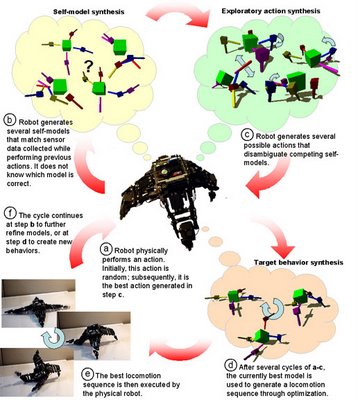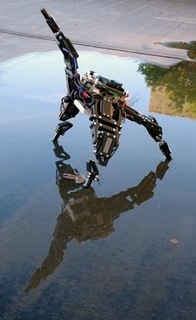
For people having to work with limited funds, there is pride in attempting elegant solutions to the formidable problems of robotic walking and stability.
So there is a hint of inverted snobbery in the occasional condescending comment on Honda's full-frontal assault combining massive computing power with overwhelming engineering know-how.
But if you stopped for a moment to think seriously about the challenges involved, the stage show, during which the robot sure-footedly strode up a flight of steps, waved its arms, rocked from side to side, and balanced on one foot, was a persuasive demonstration of the success of Honda's approach.
Comic appeal
Not that there were not moments of comedy. There was an embarrassing silence the first time the master of ceremonies asked Asimo if it was enjoying itself.
Or the whispered instructions "don't move", if Asimo came too close to you, lest you disturb its navigation systems presumably.
As I grabbed my interview with the head of Honda's European Research division in the wings stage right, I could see a back-up Asimo waiting in the background in case number one failed, always a wise precaution in robotics.
The demonstration was immensely slick and highly choreographed. True, you could not expect much else when the UK's press had been invited along













